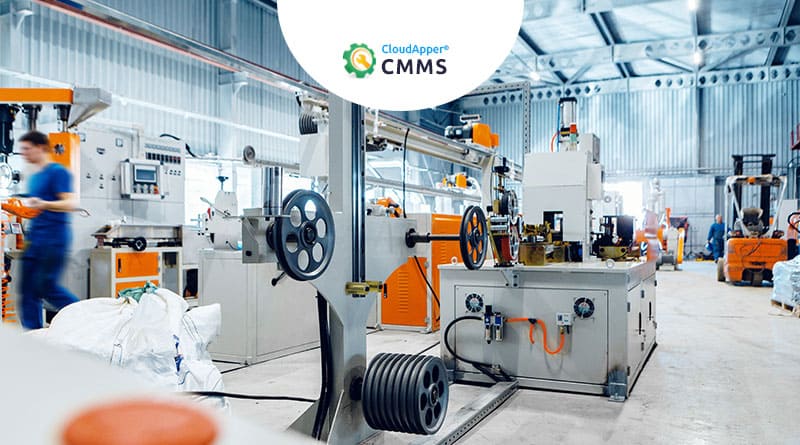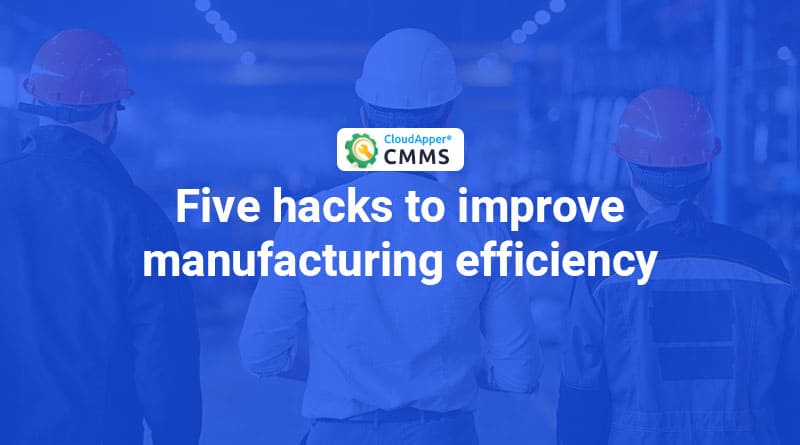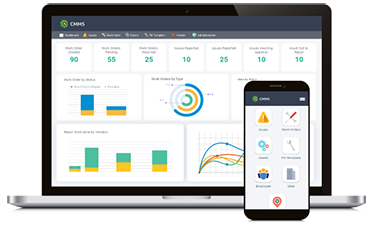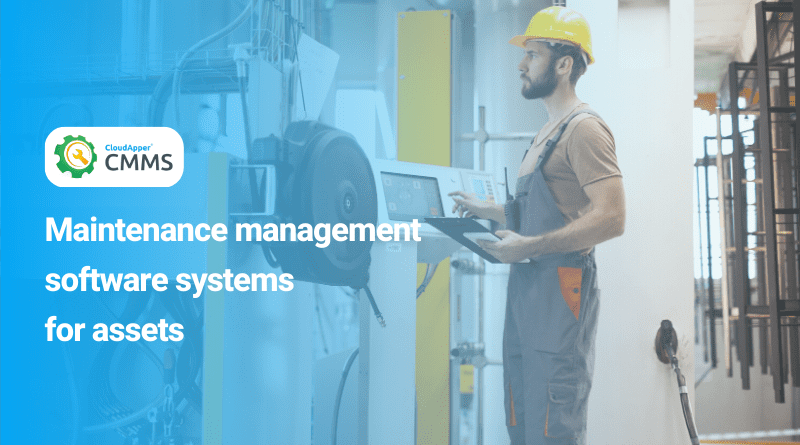Table of Contents
One of the most common goals manufacturing plants have is improving the efficiency within the plants. That’s because in several ways, improving manufacturing efficiency leads to attaining other goals as well – it reduces costs, boosts production levels, reduces wastage, and increases profits, creating a win-win situation for everyone involved. Let’s look at five practices that improve manufacturing efficiency and reduce downtime in production facilities.
Five hacks that help improve manufacturing efficiency
Identify and reduce mistakes
One of the most common reasons for inefficiencies is mistakes in the manufacturing process. These cause resource wastage and might lead to bottlenecks and even production disruptions if they are significant enough.
These mistakes occur for various reasons, like not paying enough attention to the job, hiring uncertified workers, and not providing ample breaks – it’s pretty clear what can be done to reduce them.
Some obvious things would be to hire certified workers, provide ample breaks so that they can focus better, and train them about the do’s and don’ts of the job. However, the above were just some examples – different manufacturing plants can witness various mistakes. Organizations must identify errors and work on them to improve manufacturing efficiency – providing training can reduce mistakes, and that’s the next point on this list of hacks.
Focus on training
One might think that hiring certified workers is enough, as they know the job – that’s another mistake in itself that might cost dearly! While certified workers know how to operate the machinery or do the job, every organization is different and might do things differently. Moreover, practices might change over time, and organizations need to ensure that their workers are updated on the most current and effective techniques.
As a result, organizations need to train both new and old workers to disseminate the information to their plant’s workforce. This helps improve efficiency and standardization. Moreover, as mentioned, practices change over time, and what was efficient months ago might not be efficient anymore – workers need to be updated on all of that for doing their jobs as efficiently as possible.
Moreover, managers can use training sessions to highlight common mistakes so that the workers know how to avoid them. Organizations can also use these sessions to gather feedback from the workers about the training process.
As a result, training can be used to improve the workers and the training process and the trainers, paving the path for a better, more efficient future.
Keep workers happy
It’s pretty clear that the workers are the most significant contributors within manufacturing plants, and keeping them happy can lead to wonders, one of which is improved efficiency. Morale, efficiency, and productivity are closely related – if the former increases, the latter will follow suit.
For instance, forward-thinking organizations provide morale boosters such as a work-life balance so that the workers aren’t constantly preoccupied with the job – they get to spend time with their family, go on vacations, and so on. A worker who has a good work-life balance will always perform better than one who always needs to think about the job.
Moreover, boosting employee morale will cause the employees to be loyal, leading to higher retention, lower turnover, improved efficiency, and more.
Optimize energy efficiency
Efficiency isn’t always tied to employees, as there are other aspects that might be inefficient, causing wastage and higher costs. One of these aspects is the amount of electricity used and whether it can be reduced or not.
While it’s natural for manufacturing plants to consume a considerable amount of electricity, many consume more than required, wasting both electricity and a lot of money because of inefficient plants, processes, or equipment.
Fortunately, organizations can reduce energy consumption and associated costs in several ways.

Conducting a thorough inspection to identify the inefficiencies that lead to electricity wastage is a good start. Subsequently, these inefficient practices or machinery need to be worked on. While organizations can’t replace all inefficient machinery at once, the most significant energy wasters need to be replaced. Although efficient machinery is expensive upfront, they do help ensure energy savings and lower electricity bills.
Likewise, organizations must replace old-school lighting with energy-efficient units – the latter is brighter, easier on the eyes, and cost-saving. Motion sensors can also save a considerable amount of money – lights will automatically turn off when the facility is empty. Not only will all of this reduce costs, but it’ll lead to efficient energy consumption – making your manufacturing plants stand out as responsible members of the planet.
Focus on proactive maintenance approaches
A considerable problem that hampers manufacturing efficiency is faulty, unreliable, and inefficient machinery. Manufacturing facilities have to utilize complex and expensive equipment and sometimes it is used in harsh conditions. However, if these pieces of machinery aren’t taken care of properly, they’ll break down or malfunction – leading to inefficiencies.
As a result, most organizations ensure preventive maintenance for these machines – a robust CMMS software like CloudApper CMMS can help with that effectively.
For instance, CloudApper CMMS can be used from smartphones, has all the necessary features, and is highly customizable – providing every ounce of flexibility to maintenance teams. Maintenance managers can customize the solution themselves, making it fit their processes effectively.
CloudApper CMMS streamlines preventive maintenance efforts, assists with repairs, maintenance tasks, and so much more just using your smartphones.
Try out CloudApper CMMS and learn how it can improve manufacturing efficiency at your plants – contact us now!
What is CloudApper AI Platform?
CloudApper AI is an advanced platform that enables organizations to integrate AI into their existing enterprise systems effortlessly, without the need for technical expertise, costly development, or upgrading the underlying infrastructure. By transforming legacy systems into AI-capable solutions, CloudApper allows companies to harness the power of Generative AI quickly and efficiently. This approach has been successfully implemented with leading systems like UKG, Workday, Oracle, Paradox, Amazon AWS Bedrock and can be applied across various industries, helping businesses enhance productivity, automate processes, and gain deeper insights without the usual complexities. With CloudApper AI, you can start experiencing the transformative benefits of AI today. Learn More

















